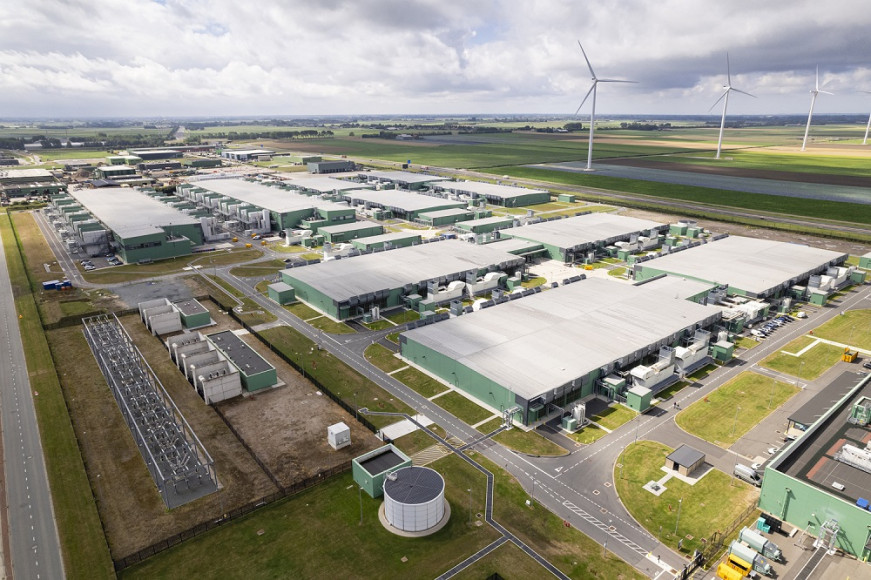ESG or Environmental, Social, and Governance is a term that originated in the finance and investment industry and has recently become a buzz term as investors increasingly incorporate ESG factors into their investment decisions. Sustainability is a broader term and is often defined as the ability to meet the needs of the present without compromising the ability of future generations to meet their own needs. Academically, there are some nuanced differences between the two terms. Practically, the two terms are essentially the same, and which term you choose to use may be determined by who you talk to. We often use the term “sustainability” when speaking to a non-financial person and explain sustainability as the three concepts of E, S, and G.
So, what does this mean for data centers? Increasingly, studies show that strong ESG performance is linked to improved financial performance and a stronger business. For data centers, this means improving ESG performance will improve data center performance – higher uptime, lower PUE (power usage effectiveness), lower WUE (water use efficiency), etc.
In the sections below, we will break it down and show you how to improve the “E,” the “S,” and the “G” of your data center for greater performance and improved resiliency.
Environmental Considerations
Data centers are critical infrastructure for the modern digital economy, but their exponential growth and the need for precise environmental controls (that come with large cooling towers) has resulted in significant environmental impacts. Energy usage is the most significant impact, with data centers consuming vast amounts of electricity to power and cool their servers which accounts for about 40% of data center energy usage. Despite increases in energy efficiency, data center energy consumption worldwide still accounts for approximately 2.5% to 3.7% of the global greenhouse gas emissions, and energy demand is only on the rise.
One of the best ways data centers can reduce their emissions is by using water cooling instead of air conditioning. The main drawback to that is that steadily increasing water consumption in data centers is also becoming a concern. Data centers require significant amounts of water to cool their equipment, and there is currently a severe lack of water efficiency innovations to reduce water demand.
Most data centers do utilize closed loop systems for cooling to minimize their water use, although the large increase in new data centers continues to increase water demand and strain local water resources. While water is generally viewed as an abundant resource, roughly one-fifth of all data centers draw water from stressed watersheds which puts a strain on local water resources. The heavy reliance upon water supplies in water-scarce basins exposes data centers to increased risks (physical, regulatory, and reputational), and highlights the role that data centers play in contributing to the local water scarcity issues.
Additionally, data centers generate significant amounts of waste, including electronic waste, chemical waste from coolants, water treatment chemicals, and other small quantities of chemicals, and lead-acid batteries. Data center waste can contain toxic substances that pose a risk to the environment and human health if not stored, managed, and disposed of properly. Diesel fuel is also stored and used on-site at data centers for use in emergency generators, and it may pose a risk if it is not managed properly. While data centers are not typically viewed as hazardous chemical sites, it is critical that they take inventory of all chemicals on-site to guarantee that all rules and regulations are followed.
Data centers are increasingly exploring sustainable alternatives such as renewable energy sources, water recycling, and responsible waste management practices to mitigate their impacts, although more action needs to be taken to mitigate the environmental impact of this rapidly growing industry.
Social Considerations
Safety and health are critical components of the "S" in ESG, as they directly impact the well-being of employees and customers within the data center environment. Companies that prioritize safety and health not only reduce the risk of workplace accidents and illnesses, but they also promote a culture of care and responsibility.
Incorporating safety and health into ESG strategies requires a holistic approach that goes beyond compliance with regulations. Moreover, companies must take proactive measures to identify and mitigate potential risks to safety and health. To assist with a start of identifying some of the health and safety hazards, check out this list of the most common audit findings. A few examples of health and safety issues include noise, heat, electrical, ergonomics, lone work, and one potentially lesser-known topic, machine operation hazards (e.g., the shredding of hard drives). Among traditional health and safety topics, data centers can further develop the “S” component by prioritizing data center employee wellness. Ways to do this include providing access to healthcare, mental health resources, and programs that promote work-life balance.
Governance Considerations
Corporate governance, the “G” in ESG, is the most established of the three pillars of ESG and defines how companies interact with the full range of external stakeholders. It is the governance “G” of environmental “E” and sustainability “S” initiatives that provide the backbone for ESG success, while accountability, transparency, and stakeholder engagement are the tools through which this success is realized.
Transparency lies at the core of effective ESG governance. Companies must be candid about their ESG strategies, targets, and progress. Regularly publishing comprehensive sustainability reports that adhere to recognized reporting standards, such as the Global Reporting Initiative (GRI) or Sustainability Accounting Standards Board (SASB), is vital. Transparent reporting, which not only highlights accomplishments but also addresses challenges and setbacks, will strengthen trust with investors, customers, employees, and the wider public, fostering a supportive ecosystem for sustainable endeavors.
Accountability is the linchpin of successful ESG initiatives. Boards of directors should take an active role to oversee sustainability efforts, ensure they are integral to the company's overall strategy, and integrate ESG metrics into executive performance evaluations to confirm sustainability efforts are prioritized. Independent audits by third-party organizations can provide objective assessments, offering external validation of ESG claims.
Additionally, shareholder engagement should extend beyond financial considerations to include discussions on environmental and social matters, guaranteeing stakeholders have a voice in shaping the company's sustainability agenda. This stakeholder engagement can be a key differentiator in effective ESG governance. By involving a comprehensive and diverse set of stakeholders, businesses can more effectively gain insights and identify blind spots.
For example, engaging with employees can encourage a culture of sustainability within the organization, empowering staff to contribute innovative ideas. In addition, collaborating with local communities can lead to more sustainable development projects that align with their needs and aspirations. Finally, engaging with NGOs, industry peers, and experts can provide guidance on best practices and emerging sustainability trends.
As businesses increasingly recognize the importance of their role in shaping a sustainable future, robust governance practices will drive them towards positive environmental and social impacts, leading to a brighter and more sustainable world for all.
Gain more insight from ESG experts, case studies, events, and opportunities. Check out our list of the top 10 [ ESG | sustainability ] newsletters for busy professionalsFinal Thoughts
In conclusion, the convergence of ESG and sustainability principles provides a clear path for data centers to mitigate their environmental impact and drive positive change. First, addressing energy consumption, water usage, and waste management are crucial steps in reducing emissions and improving overall performance. Next, prioritizing safety, health, and employee well-being fosters a culture of responsibility within data centers. Finally, effective governance practices, including transparency and accountability, are essential for driving sustainability efforts and building trust with stakeholders.
By embracing sustainable alternatives and collaborating on solutions, data centers can lead the way toward a greener, more sustainable digital future.
Are you looking for help with your data center and ESG? Reach out to your data center support team or our ESG and Sustainability services for guidance today!
Want more news and insights like this?
Sign up for our monthly e-newsletter, The New Leaf. Our goal is to keep you updated, educated, and even a bit entertained as it relates to all things EHS and sustainability.
Have any questions?
Contact us to discuss your environment, health, safety, and sustainability needs today.






